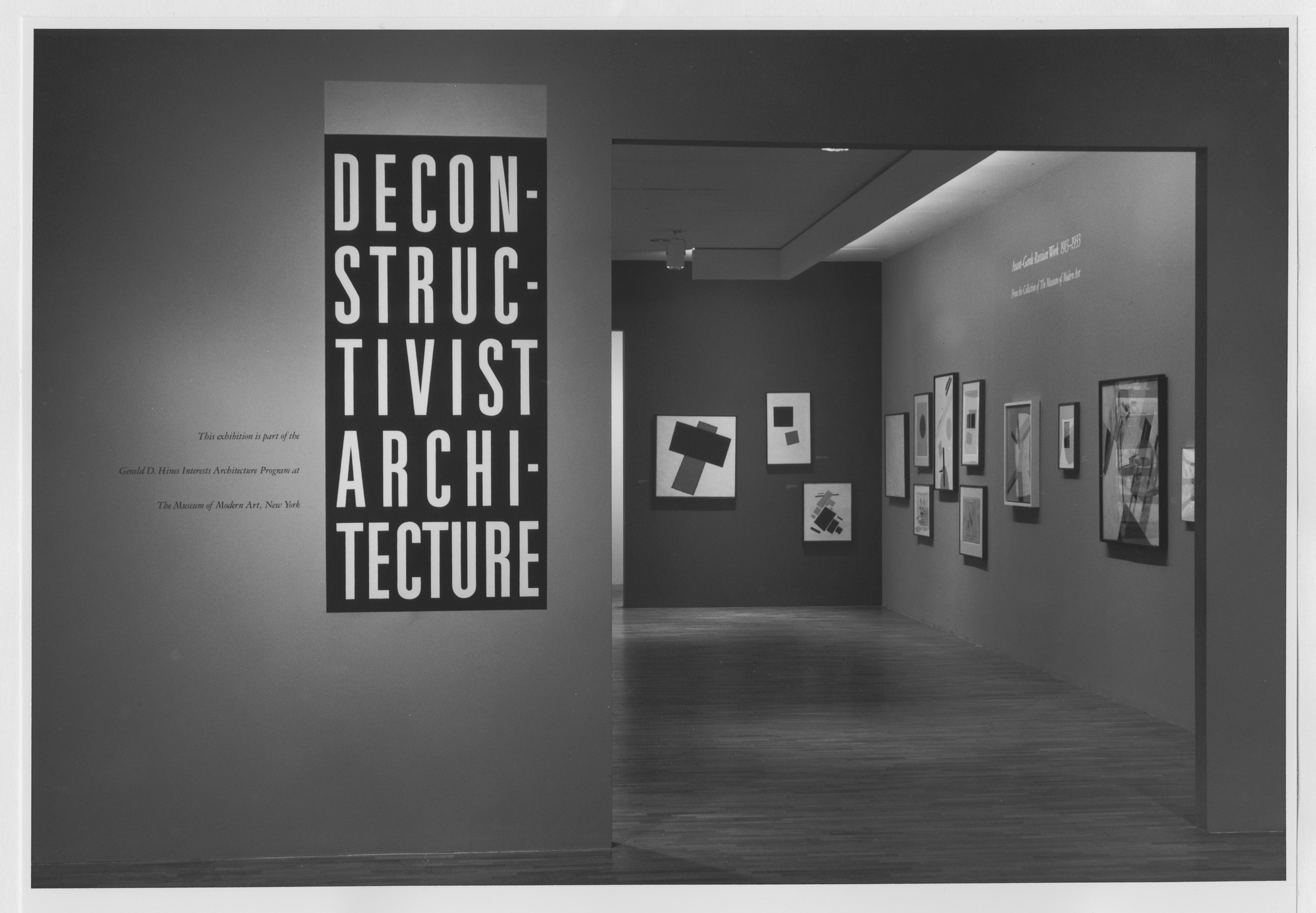
Deconstructivist Architecture MoMA
Deconstructivism is a postmodern architectural movement which appeared in the 1980s. It gives the impression of the fragmentation of the constructed building, commonly characterised by an absence of obvious harmony, continuity, or symmetry. Its name is a portmanteau of Constructivism and "Deconstruction", a form of semiotic analysis developed by the French philosopher Jacques Derrida.
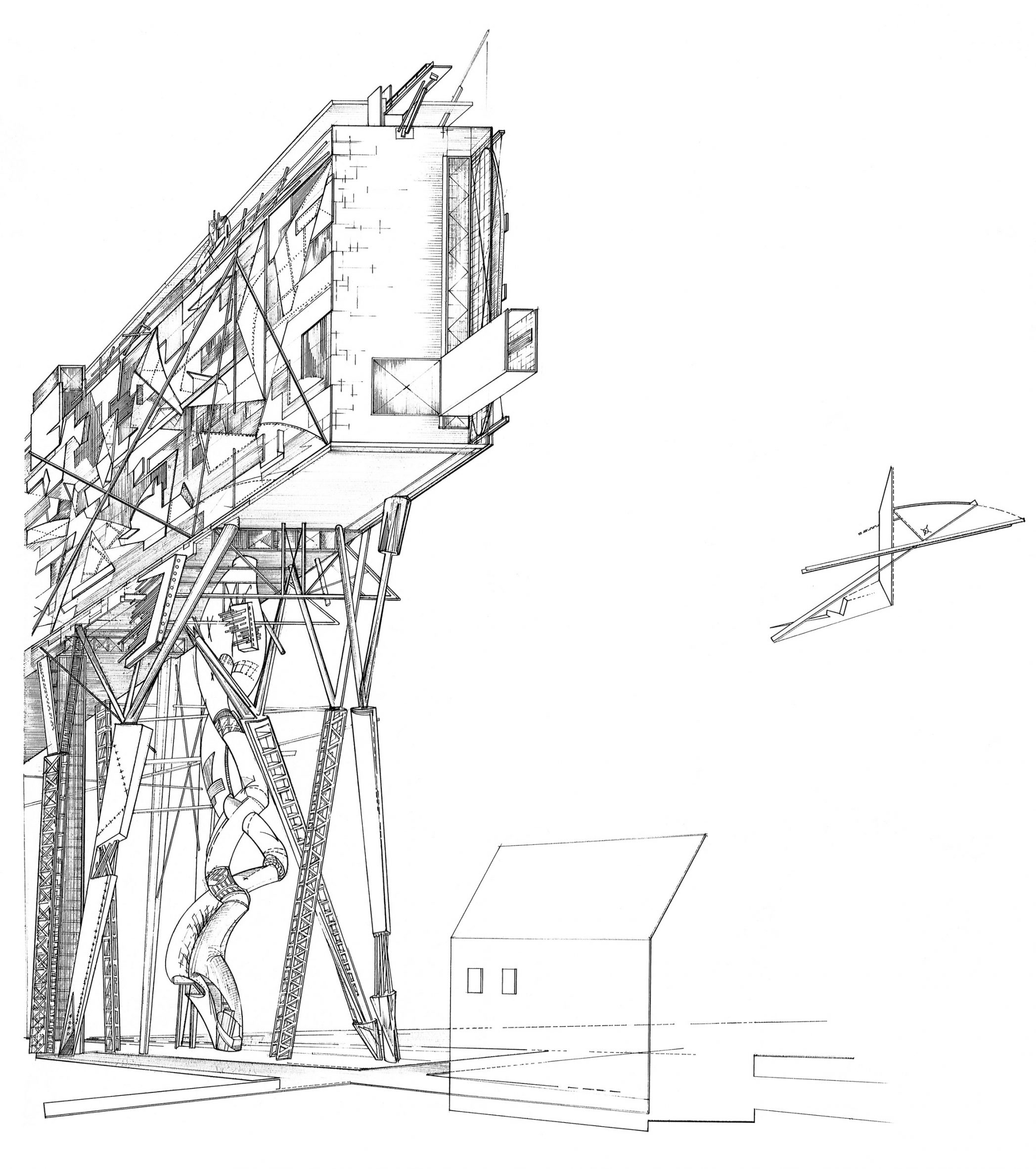
Discover 116+ deconstructivism sketches super hot in.eteachers
School Shows Continuing our deconstructivist series, we look at seven early buildings featured in the seminal 1988 Deconstructivist Architecture exhibition at MoMA that launched the careers.

Rooftop Remodeling Model of Rooftop Remodeling in Vienna b… Flickr
Deconstructivist Architecture 23 June to 30 August 1988 1 / 14 View on MoMA MoMA Staff Organizer Philip Johnson American, 1906-2005 Organizer Frederieke Taylor Organizer Mark Wigley Artists Il'ia Chashnik Russian, 1902-1929 3 exhibitions Vasyl' Iermilov 2 exhibitions Ivan Kliun Russian, 1878-1943 5 exhibitions Gustav Klutsis Latvian, 1895-1938
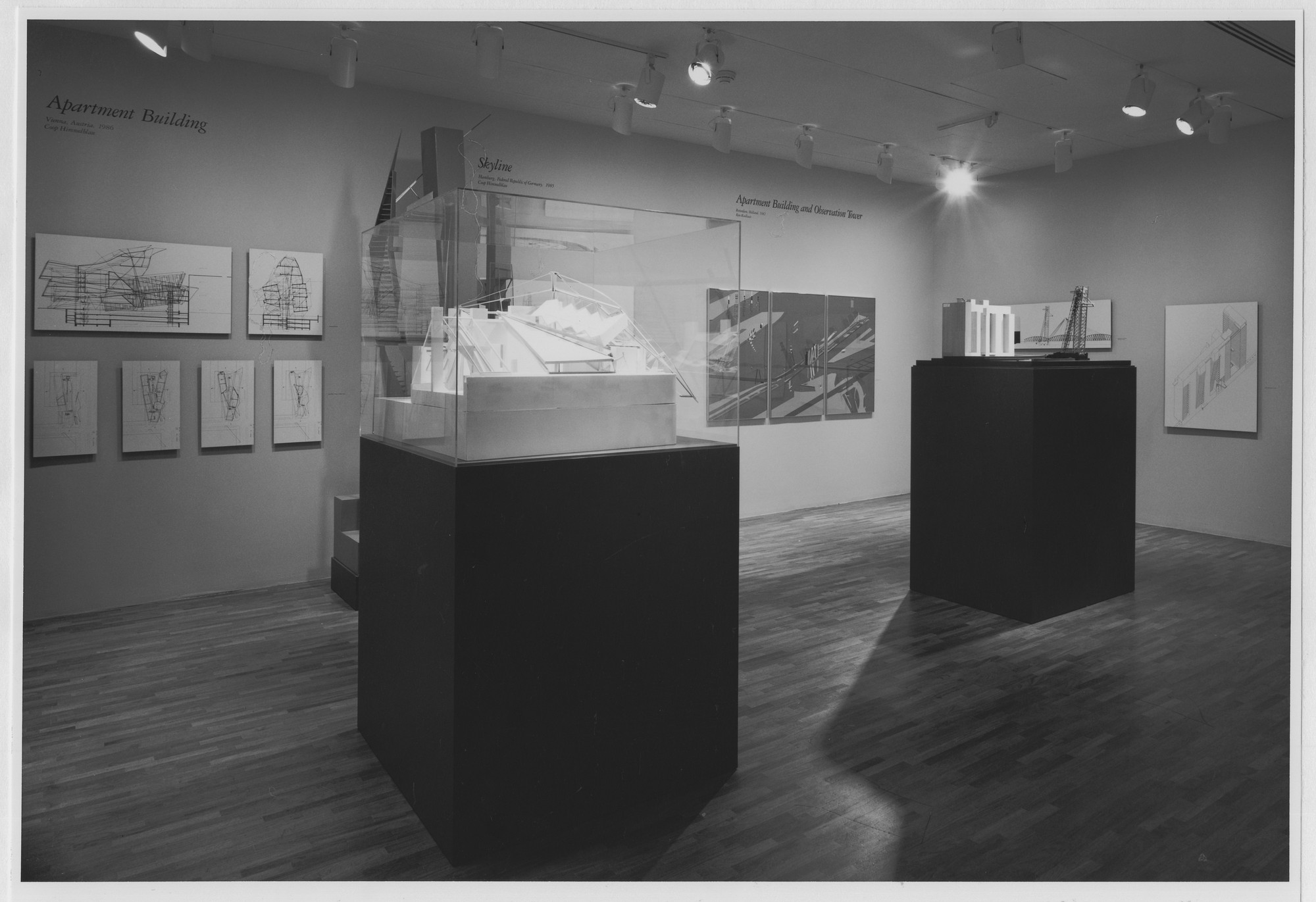
Installation view of the exhibition "Deconstructivist Architecture" MoMA
In 1988 Wigley co-curated (with Phillip Johnson) the MoMA exhibition Deconstructivist Architecture. Project location Address: 11 W 53rd St, New York, NY 10019, United States.

Bernard Tschumi is the deconstructivist architect with big ideas Santa Monica Houses, Arquitetos
DECONSTRUCTIVIST ARCHITECTURE focuses on seven international architects whose recent work marks the emergence of a new sensibility in architecture. The architects recognize the imperfectibility of the modern world and seek to address, in Johnson's words, the "pleasures of unease."

Deconstructivist Architecture Moma, Architecture, Deconstructivism
Deconstructivism was an emblematic term implying there were many crossroads intersecting in the work of these architects." "It expands the influences beyond the too literal interpretation of the.
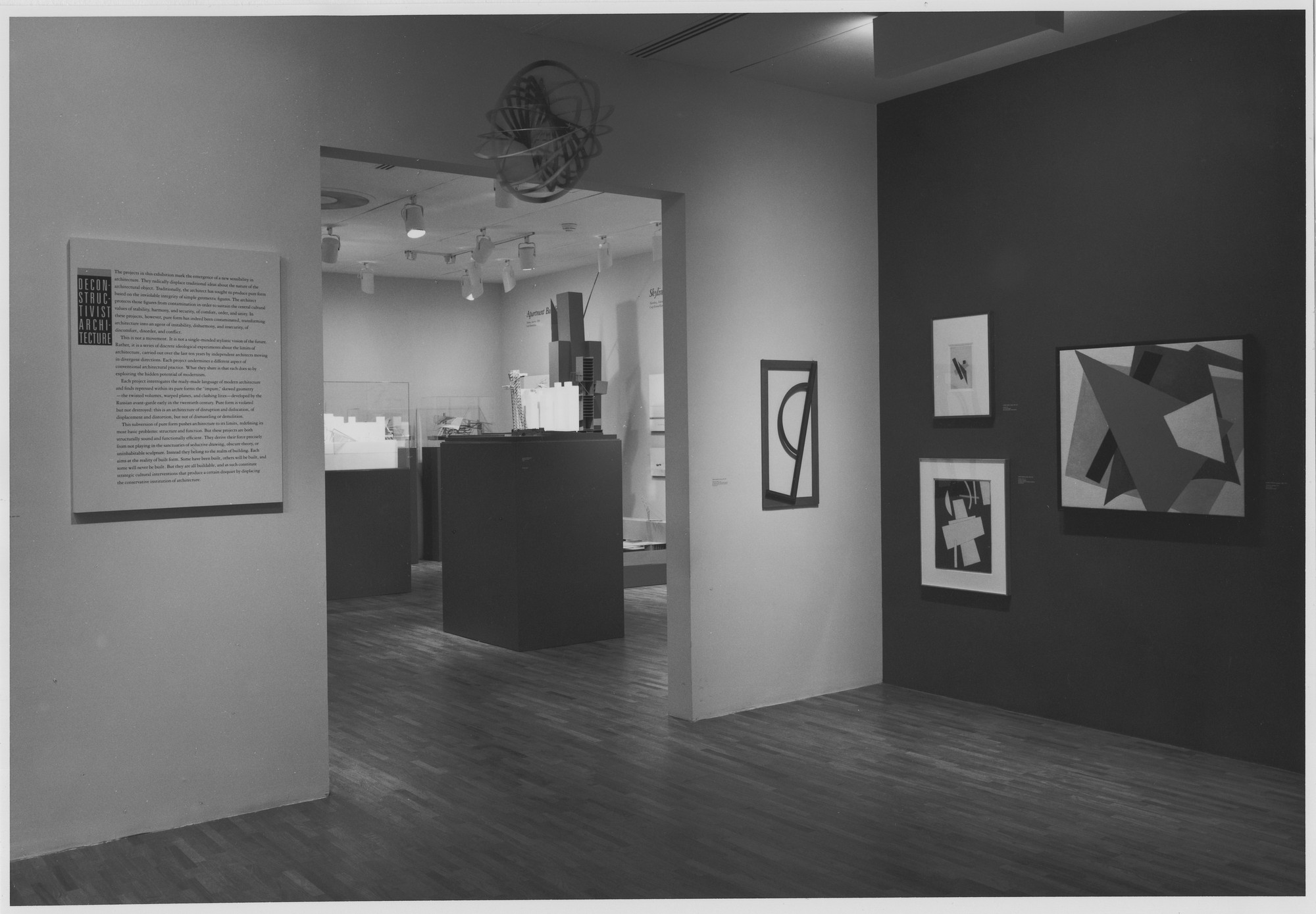
Installation view of the exhibition "Deconstructivist Architecture" MoMA
Deconstructivism was one of the most significant architecture styles of the 20th century with proponents including Frank Gehry, Zaha Hadid and Rem Koolhaas . This overview by Owen Hopkins kicks.

AD Classics 1988 Deconstructivist Exhibition at New York's Museum of Modern Art (MoMA) ArchDaily
Deconstructivist Architecture is a groundbreaking exhibition that explores the radical and innovative designs of architects who challenged the conventions of modernism in the late 20th century. The exhibition catalog, available as a PDF, features essays by Philip Johnson and Mark Wigley, as well as illustrations and descriptions of the projects on display.
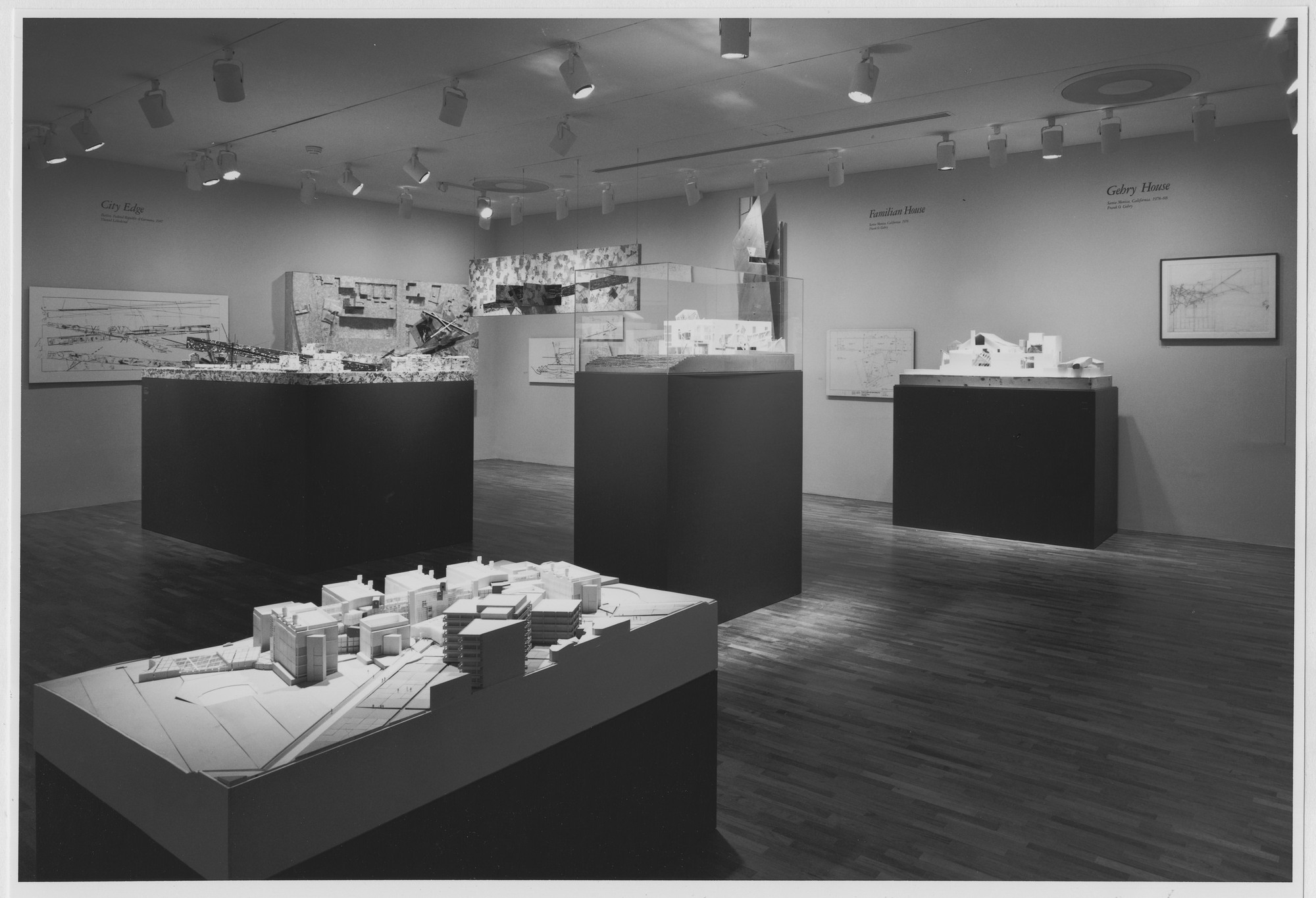
Installation view of the exhibition "Deconstructivist Architecture" MoMA
Deconstructivism is, in fact, not a new architecture style, nor is it an avant-garde movement against architecture or society. It does not follow "rules" or acquire specific aesthetics, nor.

Deconstructivist Architecture A 25th Anniversary Celebration
News Articles Zaha Hadid MoMA Frank Gehry Daniel Libeskind Archigram Coop Himmelb(l)au Deconstructivism Greg Lynn Metropolis Thom Mayne Austria Günther Domenig Architecture Cite: Florian Heilmeyer.

AD Classics 1988 Deconstructivist Exhibition at New York's Museum of Modern Art (MoMA) ArchDaily
What's on Art and artists Store Members Tickets Deconstructivist Architecture Jun 23-Aug 30, 1988 MoMA Exhibition Installation images 14 images Publications Deconstructivist architecture Philip Johnson and Mark Wigley, 1988 Out of print, 108 pages View the publication Arquitectura deconstructivista Philip Johnson y

Seven early deconstructivist buildings from MoMA's seminal exhibition Zaha Hadid Architects
DECONSTRUCTIVIST ARCHITECTURE This is the third of five exhibitions in the GERALD D. HINES INTERESTS ARCHITECTURE PROGRAM at The Museum of Modern Art. Conceived to examine current developments in architecture, the program includes the publication of catalogues to accompany the exhibitions, as well as lectures and symposia.

Decon Artists Wigley, Tschumi, Eisenman Reflect on MoMA's Landmark "Deconstructivist
Deconstructivist Architecture was displayed in three galleries at MoMA from June 23 to August 30, 1988, five decades after the influential International Exhibition of Modern Architecture of 1932. Common among the two shows was the presence of Philip Johnson—architecture curator at MoMA from 1930-32 and 1946-54, and guest curator of the 1988 show—and a preference of form and style over.

Rooftop Remodeling Model of Rooftop Remodeling in Vienna b… Flickr
Read: Peter Eisenman is the deconstructivist theorist Along with contributing to establishing the careers of the architects it featured, Wigley believes that the exhibition successfully changed.

Seven early deconstructivist buildings from MoMA's seminal exhibition Architectural
DECONSTRUCTIVIST ARCHITECTURE focuses on seven international architects whose recent work marks the emergence of a new sensibility in architecture. The architects recognize the imperfectibility of the modern world and seek to address, in Johnson's words, the "pleasures of unease."

AD Classics 1988 Deconstructivist Exhibition at New York's Museum of Modern Art (MoMA) ArchDaily
The newly coined term "deconstructivist architecture" has established itself as a terminus technicus in the process. Furthermore, response among the contemporary public, both professional and common, has been enormous.